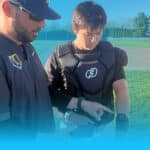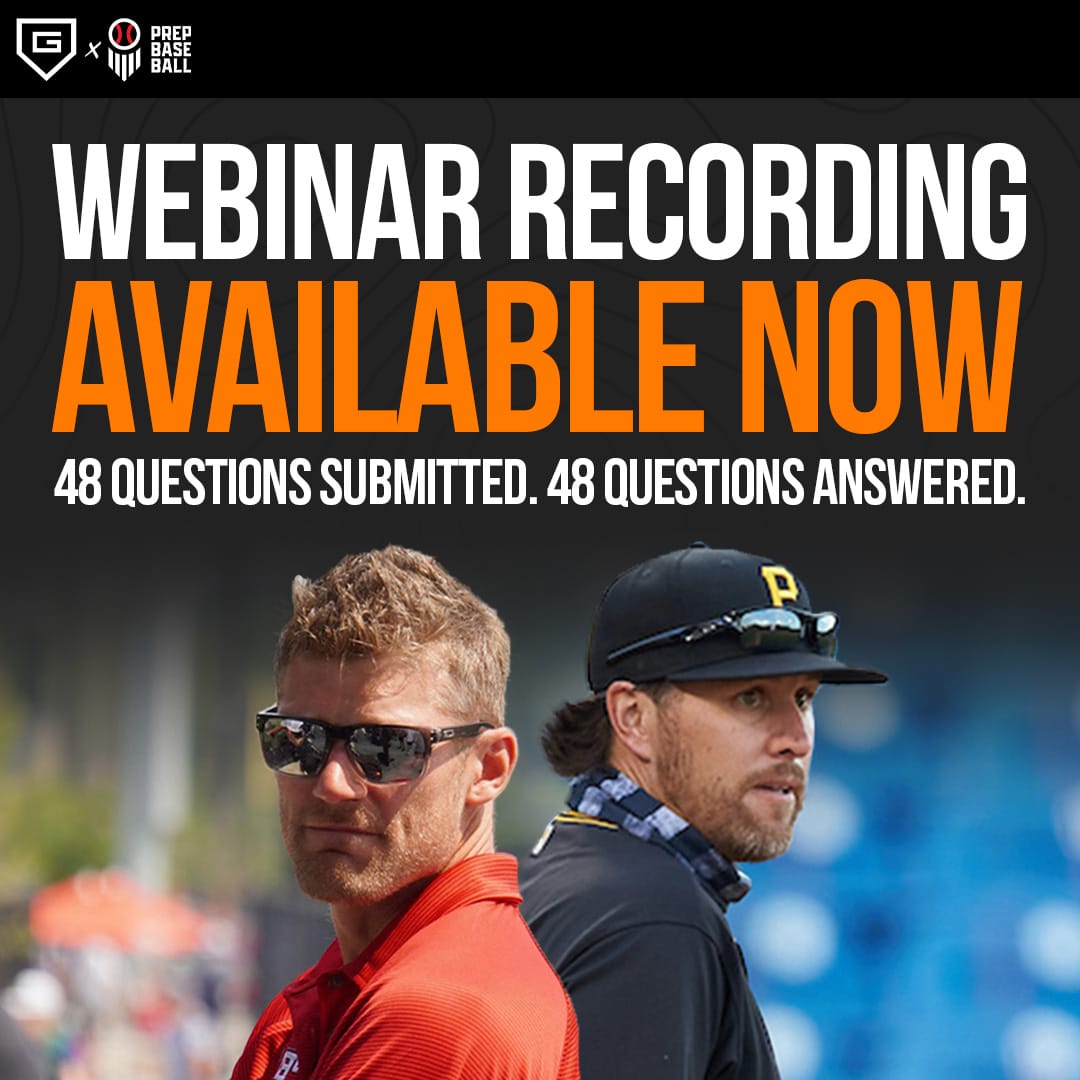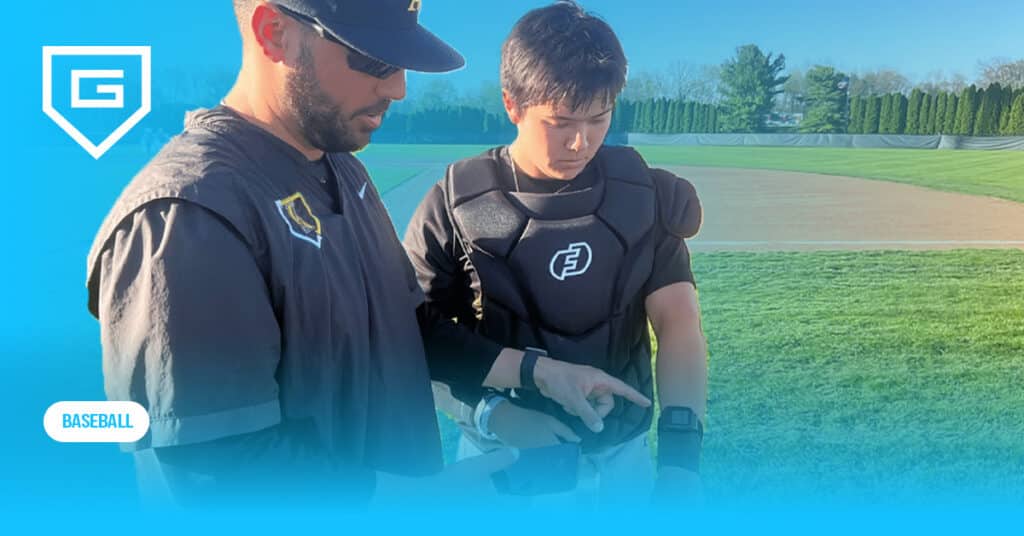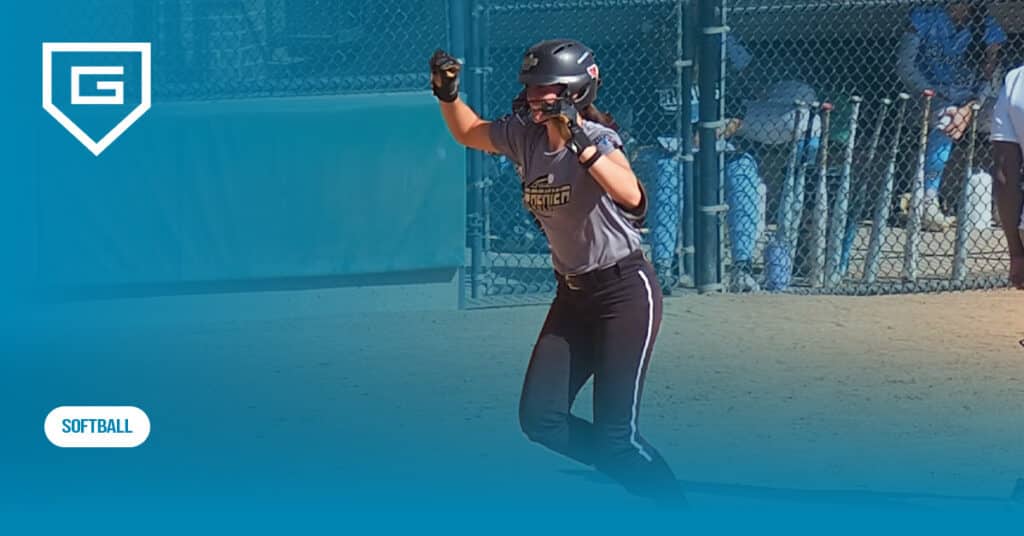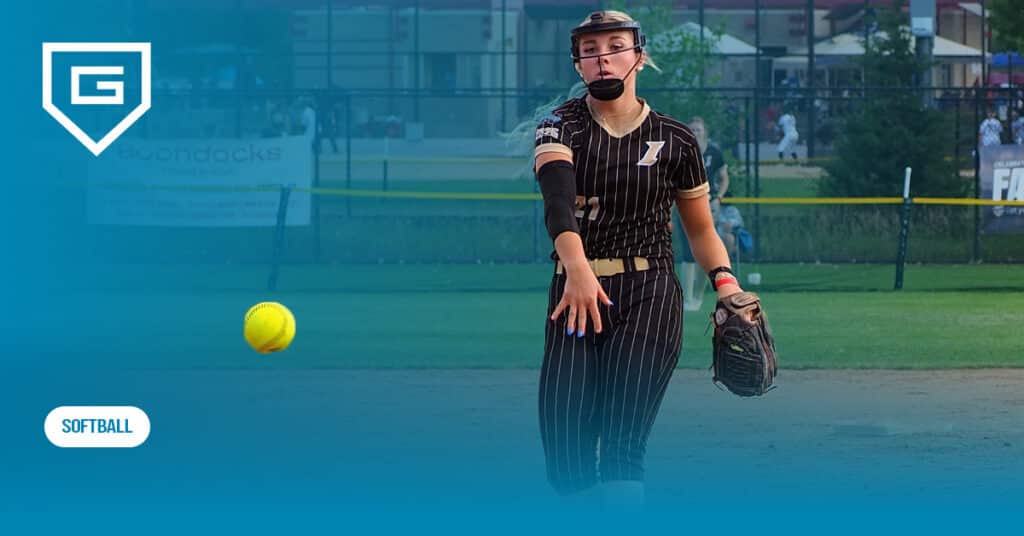Baseball Terminology: Mastering the Language of the Game
Reading Time: 10 minutes
Reading Time: 10 minutes
Baseball is a sport beloved by millions, known for its rich history, intense competition, and unique terminology.
Whether you’re a die-hard fan, coach, or player or just starting to follow the game, understanding baseball terminology is essential for fully appreciating the sport.
From “home run” to “double play,” mastering the language of baseball can deepen your enjoyment of the game and help you feel like a true insider.
Join us as we explore the baseball terminology and reveal the stories behind the words that define America’s favorite pastime.
The Importance of Baseball Terminology
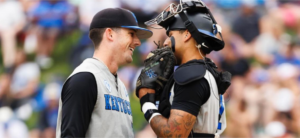
Baseball terminology helps fans understand the game, coaches communicate efficiently, and teams build cohesion.
Understanding the game
Understanding baseball terminology is crucial for understanding the game. Each baseball player, coach and fan uses specific terminology to share strategies, explain specific rules and call plays during games.
Communication efficiency
Effective communication is vital in baseball. A standardized set of terms and a baseball signals system create clear instructions through all nine innings. It helps in executing plays and reduces errors.
Building team cohesion
Shared terminology builds team cohesion by creating a common language between baseball players and their coaches. It promotes strong team connections.
Baseball Terminology Evolution Through Time
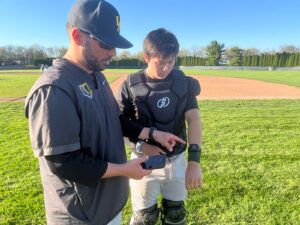
Baseball started in the 1800s and had specific terminology for the game and players. As time passed, baseball language evolved from basic descriptive words to the more analytical terminology we have today.
Early baseball terms
In the early days of baseball, the terminology was simplistic and borrowed from everyday language. Baseball was once spelled like “base ball,” “striker” is what they originally called batters, and “hurler” was the primary name for a pitcher.
Mid-20th century changes
Changes were made in terminology as baseball grew in popularity. Baseball became more organized, and professionalized and new statistical terms like “ERA” (Earned Run Average), “RBI” (Runs Batted In) and “sacrifice fly” became standard.
Modern terminology
Baseball terminology continues to evolve and is influenced by trends in sports technology and analytics. Terms like “OPS” (On-base Plus Slugging) and “WAR” (Wins Above Replacement) have become more common.
The modern communication trends on the diamond such as the baseball wristband system also affects baseball terminology and how information is communicated on the field.
Basic Baseball Terms for Beginners
Offensive terms
- Bunt: The batter lightly taps the ball into play by holding the bat horizontally and allowing the ball to make contact. Bunts are often laid down to advance a runner on base.
- Steal: When a baserunner advances to the next base while the pitcher delivers a pitch.
- Hit-and-run: The baserunner takes off to steal as the pitcher delivers, and the batter does whatever he can to make contact. The primary goal is to hit behind the runner, allowing them to advance multiple bases.
- Sacrifice fly: A batter hits a fly ball deep enough into the outfield that a runner on third base can tag up and score after the catch.
Defensive terms
- Double play: The defense records two outs in one continuous play when runners are on base. This either happens on a ground ball that is fielded and thrown around for multiple force outs, or when a fly ball or line drive is caught and a baserunner does not tag up.
- Shift: Players are repositioned from their usual position to areas where the batter is assumed to most likely hit the ball.
- Cut-off: An infielder intercepts a throw from an outfielder to make a quicker or more accurate throw to a base. The cut-off man positions himself between the outfielder and the target base.
- Relay: A relay involves multiple players making successive throws to get the ball from the outfield to an infield base as quickly as possible.
Pitching terms
- Fastball: This is the most common type of pitching motion known for its high speed – the most powerful pitchers can throw 90 to 100 mph or more.
- Curveball: A breaking, slow pitch that moves downward and to the side as it nears the strike zone.
- Changeup: This pitch is a trick for batters, designed to look like a fastball but delivered at a much slower velocity. Usually 10-15 MPH under the speed of a fastball.
- Pickoff: The pitcher throws the ball to a base from the set position in order to get a baserunner out.
Advanced Baseball Terminology
Situational terms
- Situational hitting: The batter adapts their hitting approach or technique based on the number of outs, baserunner position and the score.
- 1st & 3rd Defense: Teams typically have a variety of plays designed specifically for situations with runners on first and third base. Depending on the score, number of outs, or the batter at the plate, the call may lead to a back pick to first base, a throwdown to second, or a trick play to help get the team out of a jam.
- Double steal: Two baserunners attempt to steal bases simultaneously to create confusion among opposing infielders.
Statistical terms
- OPS (On-base plus slugging): This statistic combines a player’s on-base percentage (OBP) and slugging percentage (SLG). This stat is used to define how often a batter gets on base, and how often they get extra base hits.
- WHIP (Walks plus hits per inning pitched): The pitching statistic measures the number of baserunners a pitcher allows per inning, excluding errors and hit-by-pitches.
- BABIP (Batting average on balls in play): A batter’s batting average, excluding home runs and strikeouts.
- FIP (Fielding independent pitching): FIP focuses on the outcomes a pitcher can control – strikeouts, walks, hit-by-pitches and home runs.
Tactical terms
- Small ball: Score runs through a series of small, strategic plays – bunting, stealing bases, sacrifice hits and hit-and-runs – rather than relying on hitting for power to score runs.
- Double play defense: A variation of standard defensive positioning designed to put players in better position to execute a double play.
Baseball Terminology by Position
Pitcher and catcher
- Battery: The partnership of the pitcher and the catcher.
- Pitch framing: Catchers subtly adjust their glove and body position while receiving pitches to make them appear to be within the strike zone.
- Passed ball: When the catcher fails to catch or control a pitch that they should have handled with ordinary effort, allowing baserunners to advance.
Infielders
- Diving stop: An infielder dives to catch or stop a ground ball from their normal range.
- Tag out: An infielder tags a baserunner with the ball or glove holding the ball to get them out.
- Rundown: This is also known as a pickle. In it, a baserunner is caught between two bases. Fielders chase down the runner and throw the ball back and forth if necessary in order to tag out the runner.
Outfielders
- Gap: The areas between the center and the left or right fielder.
- Warning track: A dirt strip between the grass and the outfield wall.
- Outfield assist: When an outfielder throws the ball to a base and gets a baserunner out.
Common Misunderstandings in Baseball Terminology
Long-time fans and baseball players may remember baseball terminology easily, but many terms can be confusing or misinterpreted – especially for those who are new to the game.
Intricate rules and terms—like the infield fly rule—must be understood to fully appreciate the game and keep track of what’s happening on the field.
Frequently confused terms
Some terms are frequently confused and lead to misunderstandings about the game.
“Steal” vs. “Hit-and-run”
- Steal: A baserunner attempts to advance to the next base while the pitcher delivers the ball to home plate. The batter does not typically swing at the pitch.
- Hit-and-run: The runner starts running towards the next base as the pitcher throws the ball, but the batter is instructed to swing at the pitch no matter what. The goal is to put the ball in play so the runner can advance multiple bases.
“Balk” vs. “Pickoff”
- Balk: Any movement by the pitcher that simulates the start of a pitch without throwing the ball or interrupting the pitching motion. When a balk is called all baserunners are awarded one base.
- Pickoff: A legal move in which the pitcher throws the ball to a fielder covering a base to get a baserunner out. This play is used to catch runners who take too large of a lead or who are leaning towards the base ahead of them. A pickoff results in an out if the runner is tagged before returning to the base.
Contextual misinterpretations
The context in which a term is used can alter its meaning. Here are a few examples of how context can change baseball terms:
“Walk” vs. “Intentional walk”
- Walk: When the pitcher throws four pitches outside the strike zone during an at-bat, the batter is awarded first base. It can happen unintentionally when the pitcher struggles with getting the ball in the strike zone.
- Intentional walk: The pitcher deliberately throws four balls outside the strike zone. The intent is to face a less-threatening hitter or set up a potential double play.
Practical examples
“Foul ball” vs. “Foul tip”
A batter swings and just barely makes contact with the ball. They send it directly into the catcher’s glove or to the backstop. A viewer might call this a “foul tip.”
A “foul ball” is more specifically a ball that is hit forward, but out of the boundary of play. “Foul territory” extends outside of the basebaths and to the fence surrounding the field of play. Foul balls can still be caught by a fielder outside of the boundary for an out.
“Double play” vs. “Force out”
A force out is recorded when a ground ball is hit and a fielder steps on a base that a runner is advancing to before the runner reaches it.
A “double play” occurs when two offensive players are put out in one continuous play. The term “double play” describes the sequence of recording two outs. Most times, a double play is made of two force outs.
Implement GoRout to Improve Baseball Communication
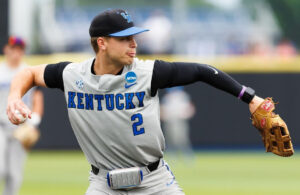
GoRout Diamond is a pitch-calling system that expands into enhanced and simplified team communication across the field. Both on offense and defense.
Baseball coaches use GoRout to convey pitch calls, defensive shifts, bunts, steals and hit-and-runs with a single tap. This wearable technology system comprises watch devices that are connected to a coaches’ app. Players quickly receive pitch calls, defensive positioning and offensive strategies directly from the dugout to their device.
Get a quote to improve your baseball communication and boost the chances of a winning season!
What is GoRout?
The GoRout Diamond system is a state-of-the-art baseball pitch-calling system for coaches and players. Coaches use GoRout to create and customize strategies tailored to their team.
It strengthens player performance by allowing for more focus on execution; streamlines communication by eliminating the need for complex signals and number systems; and optimizes baseball practices by allowing team’s to intersquad and execute situational drills more efficiently.
How GoRout Works
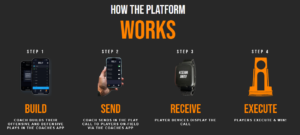
On-field coaches App
GoRout is the premier baseball communication app renowned for its easy setup and user friendly interface. It features both dark and light mode options to match your preferences. Coaches can effortlessly update offensive plays, lineups, and pitches in seconds.
Managing games, plays, lineups and hitters is a breeze with our user-friendly app and real-time updates. With a simple tap on the pitch call icons, you can instantly send instructions to players or switch to offensive mode to send out play calls.
On-field player device
GoRout’s equipment for players is ready to use right out of the box. Device packages are fully customizable to fit any budget or program.
Our wristbands display the coach’s information privately so players can access critical information without compromising their team’s strategy.
Six GoRout benefits for baseball coaches and teams
Here are six benefits that baseball coaches and teams receive using GoRout:
- Created by coaches, for coaches: The GoRout coach-to-player communication system is designed by baseball coaches who understand the game.
- Immediate configuration, independent of Wi-Fi: GoRout operates independently of Wi-Fi for reliable communication in areas with limited connectivity. Our software and hardware communicate via cellular networks without interruption – eliminating the need for syncing, routers or setup.
- Year-round adaptability: This dependable system operates year-round in any weather conditions. Its bright display screens are visible in all lighting. The comfortable devices are also designed to withstand rigors of the game. They are proven to survive bad hops, adverse weather, and anything else you can throw at them.
- Robust security features: GoRout prioritizes security to safeguard communication channels and prevent unauthorized access or interference. Every device is fully encrypted and includes a four-way privacy screen.
- Guaranteed protection against breakage: We offer 100% warranty coverage against breakage. Any issues are promptly addressed with unlimited 24/7 support via call, text, email or video.
- Enhanced team performance: Our electronic pitch-calling system boosts team performance by ensuring players receive accurate and timely signs. The simplicity of a visual communication solution also leads to enhanced focus and greater execution.
GoRout testimonials show how real coaches like you have taken advantage of our sports coaching technology for better communication and more wins during the season.
How to start with GoRout
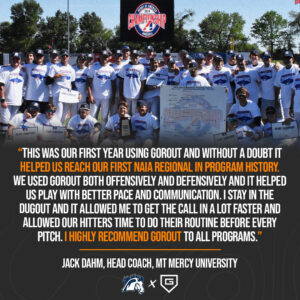
It’s simple to get started with GoRout baseball communication devices. Just unbox your GoRout equipment, download the GoRout app on your smartphone or tablet, create an account and connect player devices to the app.
Customize practice plans, drills and game scenarios tailored to your team’s needs, and introduce the system to your players.
Start using the GoRout system for pitch calling and real-time instructions during practices and games. It improves on-field communication for instant strategy adjustments, coordinated pitch selection and optimized defensive positioning.
Our system is excellent for professional, college, high school, and youth baseball teams.
Get a quote now and discover how GoRout can make your practices smoother and games more synchronized.
Practical Tips for Teaching Baseball Terminology
Here are some practical tips and baseball coaching tools that you can use to teach players baseball terminology at practice.
Interactive drills
Interactive drills are a way to teach terminology in a hands-on, engaging manner. Use specific terms during your drills to reinforce their meanings and usage.
Visual aids and flashcards
Visual aids and flashcards can help players remember and understand baseball terms and baseball coaching signs through visual associations and definitions.
Situational drills and simulated games
Set up situational drills where players practice communication. Simulate a game situation in which a coach gives offensive signs or calls different defensive strategies so players get comfortable executing the play.
Conclusion About Baseball Terminology
Mastering baseball terminology is more than just learning a list of terms. It’s about understanding the intricacies of the game. Knowing baseball terminology boosts your appreciation for the sport and makes it easier to follow.
Tools like the GoRout pitch calling device transform how terminology and strategies are communicated and executed on the field. They provide real-time insights and visual aids that make learning and applying baseball terminology more effective.
FAQs About Baseball Terminology
What are the terminologies of baseball?
Some baseball terms are at-bat, earned run average, pinch hitter, relief pitcher, double play, fly ball, seventh-inning stretch, strike zone, batter’s box, catcher’s mitt, pitcher’s mound and designated hitter.
What is some baseball slang?
Baseball slang adds color and personality to the game. Terms like “get dirty”, “can of corn”, and “frozen rope” are examples of everyday slang used during a baseball game.
What is a bad pitch called?
A bad pitch is called a wild pitch, a ball or a meatball if it’s an easy-to-hit pitch that results in a big hit for the batter.
What do you call when you hit the ball in baseball?
When you hit the ball in baseball, it’s called a “hit.” It can also be a “single” for reaching first base, a “double” for reaching second base, a “triple” for reaching third base or a “home run” for hitting the ball out of the park.

